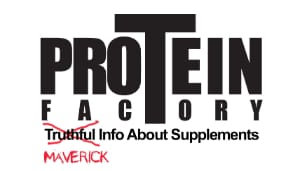Did you know that the fabric your workout clothing is made of can significantly influence the effects of your workout? It’s not only how the fabric feels on your skin. Many modern materials have a number of properties that make them suitable for exercise sessions. Let’s take a look at fabrics your workout clothes should be made of.
Nylon
Many modern pieces of workout gear, such as vests and leggings, are made of nylon. This material is resistant to mildew and is often considered to be soft as silk. It’s breathable and can wick away moisture while you’re wearing it.
Nylon also dries pretty quickly, helping you not only in your workout, but also on laundry day. This is a highly flexible material, which is why you see it being used in yoga pants and tops.
Spandex
When you need a material that can stretch, spandex is your answer. Also known as Lycra, this material can stretch up to 600% its own size before snapping right back into place. This gives you an unrestricted range of motion, making it suitable for a variety of sports.
Spandex is a synthetic fabric that features many of the same properties of nylon, such as high moisture resistance and the ability to wick away sweat. The low density of the fabric makes it highly breathable, while the antibacterial properties prevent any bad smells from building up.
Neoprene
Neoprene is often used in fitness apparel that’s geared towards weight loss. Because it’s able to elevate your body temperature, it promotes sweating and absorbs the sweat. The loss of moisture in turn helps you lose weight. Many products such as sauna vests are made from neoprene and are also form-fitting, which helps eliminate the appearance of belly fat.
Another benefit of neoprene apparel is its ability to provide lumbar and abdominal support. One study found that wearing a neoprene wrap during exercise increased a participant’s caloric expenditure by 29% per minute. Because neoprene keeps your muscles warm, the risk of sports injuries is also reduced.
Bamboo
Did you know that there’s workout gear made of bamboo pulp? As it turns out, the natural fabric it yields is lightweight, breathable, and good at wicking away sweat. Bamboo fitness gear also has antibacterial properties, which ensures that it doesn’t smell bad after a few wears. It’s also said that bamboo can protect your skin from UV rays.
GORE-TEX
When it comes to protecting yourself from the elements, the power of GORE-TEX is second to none. Unlike other materials on this list, GORE-TEX is thicker and completely resistant to moisture. Instead of absorbing it or wicking it away, water simply beads on the material and runs off the surface.
You can find GORE-TEX in jackets, pants and shoes. It’s also windproof, further assisting you in surviving harsh weather. While this material isn’t as breathable as some others, it does provide some level of airflow. Whether you’re taking early morning runs or stormy hikes, GORE-TEX will help you stay cool and dry.
Polyester
Perhaps most common of all workout fabrics, polyester has been around for some time and is still serving athletes well. It’s more durable than most other materials and isn’t prone to creasing or wrinkles. Polyester is extremely lightweight, fairly breathable and good at wicking moisture.
Polyester also helps prevent UV rays from damaging your skin. Similar to GORE-TEX, (although not as powerful) polyester also helps insulate your skin when it’s wet. Unfortunately, polyester doesn’t usually contain antibacterial properties, make it prone to smelling over time.
Conclusion
Now that you know a thing or two about the best workout materials on the market today, you’ll know what to look out for in your next workout apparel purchase. Remember, quality is always the most important factor.

